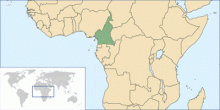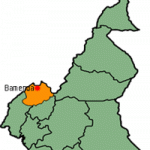Regional Background
The Republic of Cameroon is a unitary republic of central and western Africa. The country is called "Africa in miniature" for its geological and cultural diversity. Cameroon is home to over 200 different ethnic and linguistic groups. English and French are the official languages. Early inhabitants of the territory included the Sao civilization around Lake Chad and the Baka hunter-gatherers in the southeastern rainforest. Portuguese explorers reached the coast in the 15th century and named the area Rio dos Camarões ("River of Prawns"), the name from which Cameroon derives. Fulani soldiers founded the Adamawa Emirate in the north in the 19th century, and various ethnic groups of the west and northwest established powerful chiefdoms and fondoms. Cameroon became a German colony in 1884. After World War I, the territory was divided between France and Britain as League of Nations mandates. The Union des Populations du Cameroun political party advocated independence but was outlawed in the 1950s. It waged war on French and Cameroonian forces until 1971. In 1960, French Cameroun became independent as the Republic of Cameroun under President Ahmadou Ahidjo. The southern part of British Cameroons merged with it in 1961 to form the Federal Republic of Cameroon. The country was renamed the United Republic of Cameroon in 1972 and the Republic of Cameroon in 1984.
Compared to other African countries, Cameroon enjoys relatively high political and social stability. This has permitted the development of agriculture, roads, railways, and large petroleum and timber industries. Nevertheless, large numbers of Cameroonians live in poverty as subsistence farmers.
The Northwest Region is the third most populated province in Cameroon. The population of the province is largely a young one, with over 62% of its residents aged less than 20 years. The dependency rate is therefore high in the province, particularly in the rural areas.
The population of the North-West Region is a conglomerate of many ethnic groups, comprising the native population and a significant proportion of immigrants from other provinces and from foreign countries, particularly Nigeria, with whom the province shares boundaries in the North and North-West. The main ethnic groups are: Tikari, Widikum, Fulani. The main languages spoken in the province include Bafmen, Oku, Lamnso, Ngemba, Pidgin English, Balikumbat, and Nkom. Colonial masters created administrative boundaries that cut across ethnic groups and cultures. As a result, parts of some ethnic groups now lie in different divisions and provinces. This is believed to be the cause of many land conflicts.
In the province, the social organization recognizes at its head a chief, also called the Fon. The Fons, who sometimes in their tribal area may be more influential than administrative authorities, are enthroned as the living representative of the ancestors.
Bamenda
(City where the Chapter’s Headquarters are located)
Bamenda, also known as Abakwa and Mankon Town, is the capital of the North West Region. The city has an estimated 446,000 inhabitants. The main industries are the processing of agricultural produce such as coffee.
In origin the city is an amalgamation of three villages - Mankon, Mendakwe and Nkwen. Bamenda's principal ethnic group is the Tikar. In the past, the Tikar faced invasions from peoples in the surrounding hills, and between 1700 and 1800, they joined a confederation established by the Mbum for defense purposes.
Bamenda was subjected to German colonialism in the late 19th century. After the defeat of the Germans in World War One, the League of Nations shared German colonial territories among victorious nations. Western Cameroon was administered jointly with Nigeria under the protectorate of the British until 1961 when following a plebiscite it attained independence by joining then the already independent République du Cameroun.
Country Statistics
|






